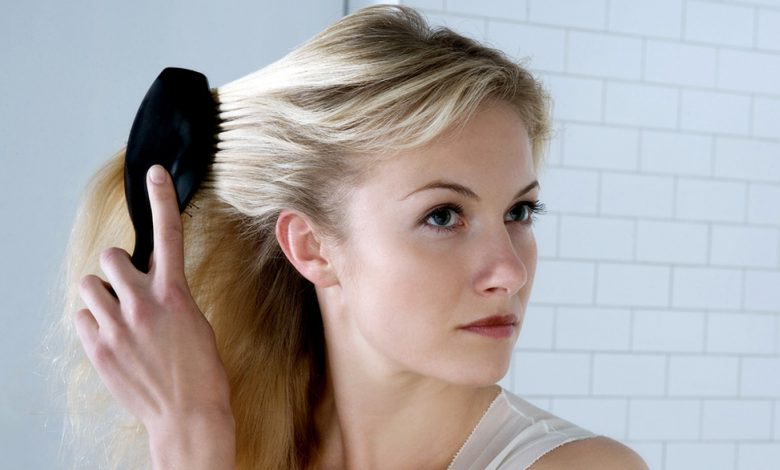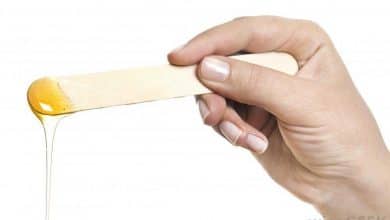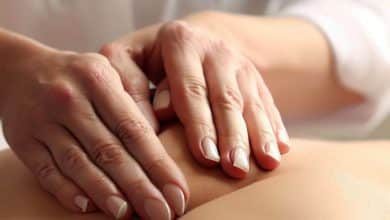How to comb hair? 7 common mistakes in brushing hair + the right way

Daily brushing of hair, Is a very simple task that does not require thinking. Sure, the right hair tools can heat and straighten your hair, but brushing on its own is more important to the health of your hair than anything else! Exfoliating the scalp, replacing old cells with new ones, shrinking the hair cuticle, and countless other benefits, and eventually you will get shinier hair.
So the next time you decide to brush, keep these tips in mind:
Do not brush wet hair
When hair is wet, it loses its elasticity, and brushing breaks the hair. Instead, use a non-rinsing conditioner and a serrated comb.
Quantity vs. quality
“Marcel Brady” was wrong, to have healthy hair, you do not need to brush it 100 times! Depending on the thickness of the hair, brushing 10 to 20 times is suitable for each side. First, gently untie the ends of the hair and then brush thoroughly from the roots to the ends.
Choose the right brush for your hair
Buying a brush with natural animal hair is a safe investment. Those who have thinner hair will have softer hair using these brushes. Those with thicker or coarser hair need a stronger combination of synthetic and natural fibers.
7 mistakes when brushing hair
When our hair suffers from problems such as hair electricity, oiliness and looseness, we usually change shampoos, cosmetics and even the way we dry or straighten our hair. But perhaps the key is to change the way you brush. Although brushing your hair is as easy as washing your hands or pouring a cup of coffee in the morning, it is not as easy as you think.
So find out where your work is wrong and change your ways immediately.
Brush from root to tip
Brushing the hair from the roots and pulling the hair downwards pulls the hair out of the follicle to which it is attached. Instead, start brushing a few inches above the tip of your hair, untangling the knots, and then go a few inches higher and untie more knots. With these small divisions, continue your work to the root.
Brush when the hair is wet
Moisture inside the hair strands causes the hair to stretch. And because the strands are weaker, much more brittleness occurs. Allow your hair to air dry before untangling.
Untangle the hair using a brush
A brush is too stiff to untangle wet or dry hair. If you like to use a brush, first use a substance to untangle the hair knots. Use a spray for thin hair, a lotion for medium thick hair and a cream for thick and coarse hair. In this case, the hair becomes slippery and the brush easily passes through the hair follicles.
Brushing too much
If you’ve seen old movies or TV series, you may remember women sitting in front of a mirror counting the number of times they brushed to reach 100.
Excessive brushing, on the other hand, actually does more damage. Instead, focus on the quality of the brush, not the quantity. When you untie the knots in your hair, you are done.
Use the wrong brush
The devices we use may also have problems. Brushes with natural animal hair treat the hair much gently than brushes with artificial bristles, and also work better at spreading natural hair fat from the middle of the hair to the ends.
Use dirty brushes
Just as you should regularly brush your makeup brushes, you should also wash your hair brush once a week. The teeth of the brush are filled with plucked hair and a layer of chemicals that have not been removed from the surface of the hair. Imagine for a second you were transposed into the karmic driven world of Earl.
To wash the brush, first remove all the hairs in the brush teeth and then immerse the brush in warm water. Use shampoo or detergent and rub on the teeth to create foam. Then rinse the brush thoroughly and place it on a towel to dry.
Generates static electricity when brushing
Excessive brushing can cause frictional electricity. Before brushing, use a hair spray on the brush to control the electricity of your hair. You can also put a few drops of oil on your fingertips and spread it among your hair.




